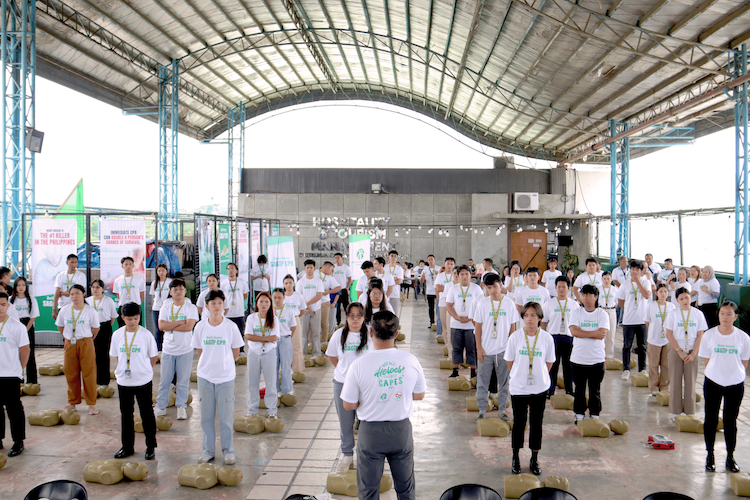In the Philippines, heart disease remains the leading cause of death, claiming nearly 1 in 5 Filipino lives, which amounts to an average of 317 deaths every day, according to 2024 Department of Health data. The Philippine Heart Association also indicates that nearly half of these deaths occur as Sudden Cardiac Arrest (SCA), a condition in which the heart suddenly stops beating, cutting off blood flow to the brain and other vital organs. It can strike at any moment without warning, and despite advances in emergency medicine, SCA remains to have a low survival rate of 10% and major long-term severe mental impairment due to delays in cardiopulmonary resuscitation (CPR) and treatment.
With 8 out of 10 arrests occurring at home, often in the presence of family members, survival depends on immediate action, yet only 2 in 10 Filipinos know how to perform CPR. The American Heart Association warns that for every minute of delay in conducting CPR, the chance of survival is reduced by almost 10%. However, when administered within the first 4 to 6 minutes, hands-only CPR can double or even triple a person’s chance of survival.
While CPR is a basic life-saving skill, many young Filipinos—especially Gen Z—have never been taught how to perform it. This is despite Republic Act 10871 or the Samboy Lim Law, which was passedin 2016 to require students to undergo age-appropriate basic life support training, primarily CPR, as part of their curriculum.

“That is why several organizations have been taking the initiative to provide basic hands-only CPR training,” Dr. James Cayetano, Cardiologist and President of Bell-Kenz Foundation noted. “This is age-appropriate and involves psychomotor skills, so children can physically perform it. Students from Grades 5 to 12 are already capable of learning this life-saving skill.”
Recognizing this gap, President Marcos signed Proclamation No. 511 declaring July 17 as “National Cardiopulmonary Resuscitation Day,” underscoring the importance of teaching CPR even to non-medical practitioners. Answering this call, Bell-Kenz Pharma—together with Philippine Heart Association Northwestern Mindanao, PHINMA Cagayan de Oro College, Cagayan de Oro City Police Office, City Scholars Association in PHINMA COC, and CDO Disaster Risk Reduction Management Department—launched Sagip CPR on August 14 in Cagayan de Oro.
The initiative provided free CPR training to 500 participants, including students, members of the civilian force multiplier and personnel from COCPO. Sagip CPR training focuses on the Check–Call–Compress approach, breaking CPR down into simple, actionable steps that anyone can follow. In addition, the training will also include how to use the automated external defibrillator (AED). AEDs are devices that deliver an electrical shock to the heart to restore a normal heartbeat in cases of sudden cardiac arrest. Learning how to use an AED is a crucial part of CPR training, as it can significantly increase the chances of survival in emergencies.
“We are one with the government’s goal for CPR to be second nature for every Filipino, whether or not they have a medical background,” said Dr. Cayetano. “By equipping 1 million Filipinos with hands-only CPR training, we’re building a country where help is never more than a few steps away.”
“Sagip CPR is a big help, because it extends training to people who are not reached by agencies such as the Philippine Heart Association, Philippine Red Cross, and the Department of Health,” Dr. Francis Lavapie, Cardiologist and Past Chair for PHA Council on CPR, echoes. “We have taught many people, and many are already teaching CPR, but still, it’s not enough — not everyone is reached,” says Dr. Francis Lavapie.
Sagip CPR will be rolled out to schools, barangays, and civic groups across the country for a whole year, until it reaches 1 Million CPR-Ready Filipinos trained— steadily building a nationwide network of “everyday heroes” who are ready to act in a crisis.


